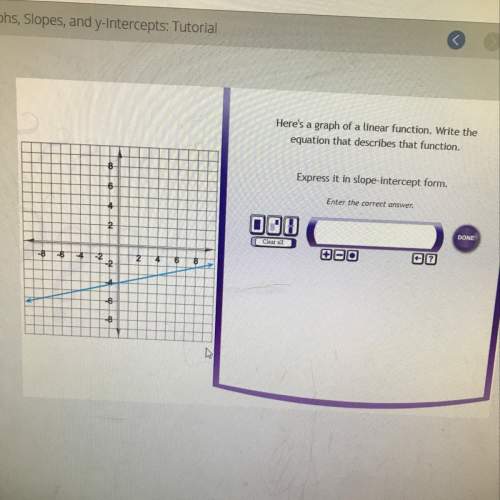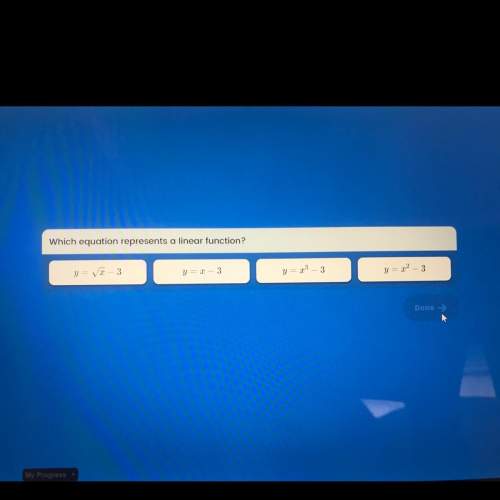
Mathematics, 20.09.2020 16:01 DASASDAEDWEDA
On a coordinate plane, a curved line crosses the x-axis at (negative 1, 0) and crosses the y-axis at (0, 0.25). The line exits the plane at (negative 2, negative 6) and (2, 6). Which statement is true about the end behavior of the graphed function? A. As the x-values go to positive infinity, the function's values go to negative infinity. B. As the x-values go to zero, the function's values go to positive infinity. C. As the x-values go to negative infinity, the function's values are equal to zero D. As the x-values go to positive infinity, the function's values go to positive infinity.

Answers: 1


Other questions on the subject: Mathematics


Mathematics, 21.06.2019 23:20, savannahvargas512
For which pairs of functions is (f•g)(x)=12x? f(x)=3-4x and g(x)=16x-3 f(x)=6x2 and g(x)= 2/x f(x)= and g(x) = 144x f(x)=4x and g(x) =3x
Answers: 1

Mathematics, 21.06.2019 23:40, amandaelisantos
In the diagram, a building cast a 35-ft shadow and a flagpole casts an 8-ft shadow. if the the flagpole is 18 ft tall, how tall is the building? round the the nearest tenth.
Answers: 2

Mathematics, 22.06.2019 00:10, jocelynfray16
Change negative exponents to positive. then solve. round to four decimal places
Answers: 3
You know the right answer?
On a coordinate plane, a curved line crosses the x-axis at (negative 1, 0) and crosses the y-axis at...
Questions in other subjects:

Mathematics, 11.03.2021 06:20

History, 11.03.2021 06:20


Mathematics, 11.03.2021 06:20


Chemistry, 11.03.2021 06:20

Health, 11.03.2021 06:20


Biology, 11.03.2021 06:20

Computers and Technology, 11.03.2021 06:20





